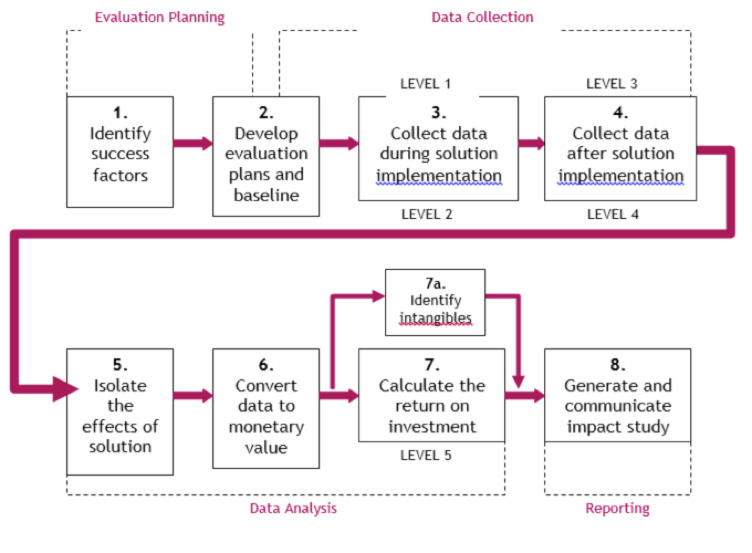ROI Learning™ - Key Characteristics
- Measurement and Evaluation (M & E) must be tied back to the organisation’s strategic plan.
- M & E is an integral part of the learning process design – it must be planned up front.
- Technology is significantly enabling the M & E process.
- The implementation of a comprehensive M & E process enhances the control of quality of the learning process.
- Proper M & E leads to increased emphasis on the analysis of ongoing learning needs for individuals and the organisation.
- Without comprehensive M & E, training and development budgets have been reduced or eliminated (especially in times of economic downturn).
- With comprehensive M & E, the status of learning and development departments and their budgets have been enhanced.
- There are many successful examples of comprehensive M & E applications.
- Proper M & E of the learning process puts training and development on the same level as other business processes – the concept of ROI has long been used to formulate business cases and to place a value on the pay-off of capital investments.
ROLI™ - Fig. 1: Key Steps

Commercial benefits
The ROLI™ is calculated using the monetary value of the programme benefits and the costs. The benefit/cost ratio (BCR) is the programme benefits divided by the cost. The formula is:

The ROLI™ uses the net benefits divided by programme costs. The net benefits are the programme minus the costs. The formula is:

This is the same basic formula used in evaluating other investments where the ROI is traditionally reported as earnings divided by investment. The ROLI™ from some training programs may be high. For example, in sales, supervisory, leadership and managerial training, the ROLI™ can be quite large (frequently over 100%), while the ROLI™ for technical and operator training may be lower.
Cultural benefits
In addition to tangible monetary benefits, most education and training programs will have intangible non-commercial cultural benefits. Data items that cannot be converted to monetary values are considered cultural benefits. While many of these items can be converted to monetary values, often they are not because the process used for conversion is too subjective and the resulting value loses credibility and may damage the overall validity of the ROLI™ calculation. These cultural benefits may include:
- Increased job satisfaction
- Increased organisational agility and commitment
- Improved teamwork
- Improved customer service
- Reduced complaints
- Reduced conflicts
For some learning programmes and some organisations, these intangible cultural benefits are extremely valuable, often carrying as much influence as the commercial ‘hard data’ items.